In addition to the equipment described on page Keeping records, there are other items I have with me during inspections.
GPS maps
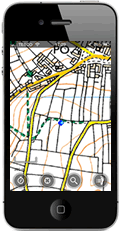 My printed maps usually tell me where I am
but occasionally things can get difficult. So I've installed the OutDoors
app in my iPhone, together with 1:25000 Ordnance Survey maps for the counties I work in.
This app shows me exactly where I am on the map (the blue blob in the centre of the screen, right) even when there's no phone
signal. Additionally it can draw a trace of my route, for instance when following an unauthorised diversion.
My printed maps usually tell me where I am
but occasionally things can get difficult. So I've installed the OutDoors
app in my iPhone, together with 1:25000 Ordnance Survey maps for the counties I work in.
This app shows me exactly where I am on the map (the blue blob in the centre of the screen, right) even when there's no phone
signal. Additionally it can draw a trace of my route, for instance when following an unauthorised diversion.
Tools for clearing obstructions
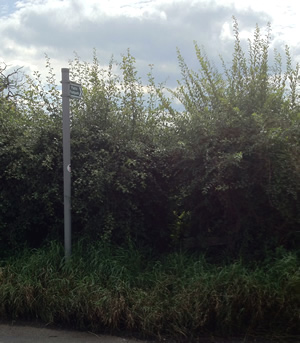 Before
BeforeSome paths are in farming areas and are little walked. Quite often I'll come across a stile where the hedge on either side is so overgrown that the stile is very difficult or impossible to use, sometimes completely invisible. I also come across fallen trees or boughs that obstruct the path.
My understanding of the law is that I'm allowed to clear this sort of obstruction in order to allow me to use the path. I'm not allowed to visit the site specifically to clear an obstruction, nor am I allowed to do any more than necessary.
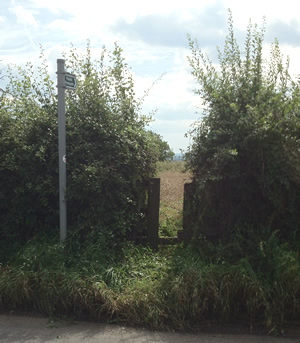 After ten minutes with the billhook
After ten minutes with the billhookFor trimming hedges I've tried secateurs (too slow), hedge clippers (no good for thick stems), and loppers (no good for thin stuff). I'm reluctant to take any more tools than necessary, because of the weight and inconvenience. I've ended up with a billhook as my single weapon of choice for hedges. The billhook is a traditional hedge-layer's tool, somewhere between a knife and an axe. Or you could look at it as a small machete. After a bit of practice I find I can trim any hedge back without difficulty.
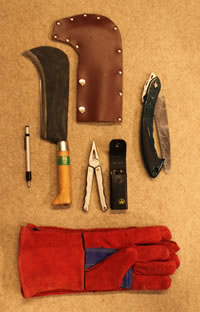 My obstruction-clearing toolkit consists of:
My obstruction-clearing toolkit consists of:
- A billhook with leather holster and diamond sharpener
- A folding pruning saw
- A pair of thick leather gauntlets
- A multitool incorporating pliers, wire cutters, etc
The wire cutters and pliers come in handy for various minor tasks including dealing with barbed wire on a stile, that could injure a walker or damage clothing.
Tools for waymarks
I work with three HAs. One of them is happy to supply me with waymarks to put up where necessary.
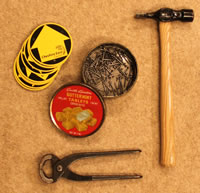 I take a numbers of waymarks, some nails, a tin to keep them in, a lightweight hammer, and a pair of pincers.
I take a numbers of waymarks, some nails, a tin to keep them in, a lightweight hammer, and a pair of pincers.
It takes a bit of practice to get the positioning of a waymark just right. I always put it in place temporarily, then retreat ten metres or so to see how it looks to an approaching walker, before nailing it permanently.
